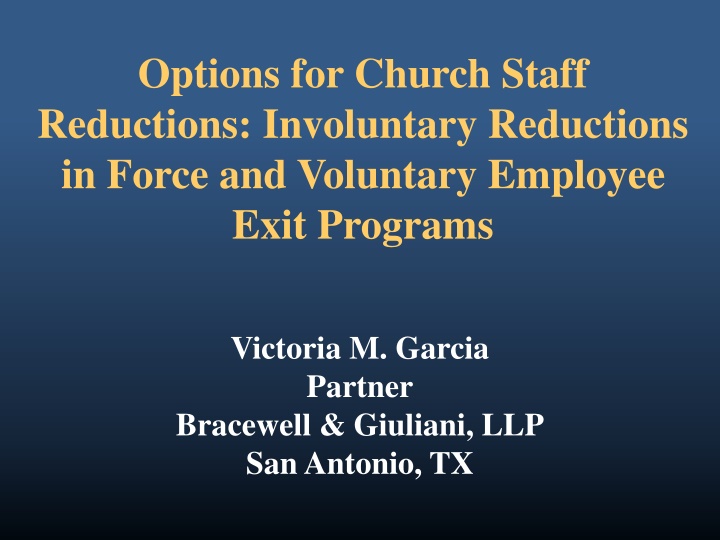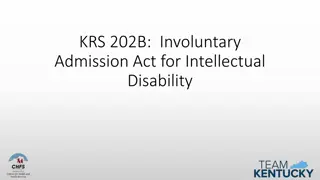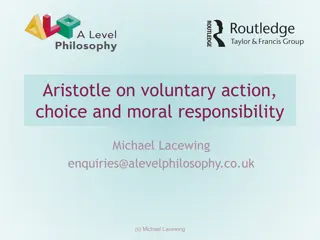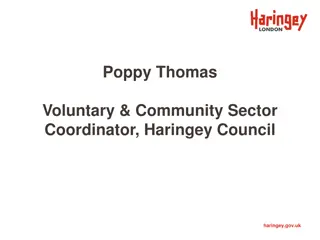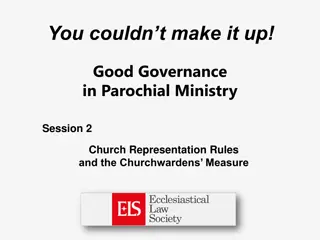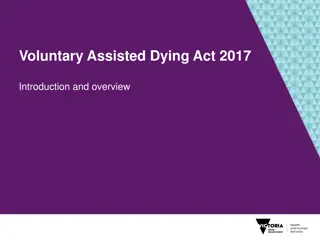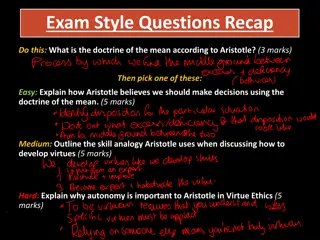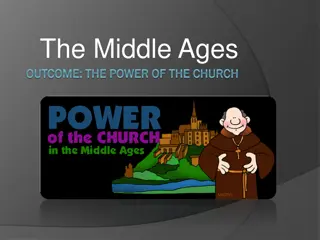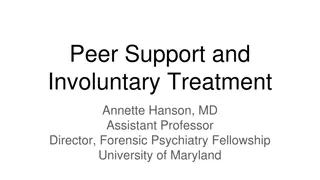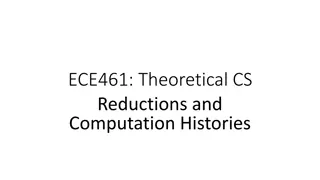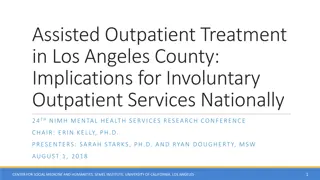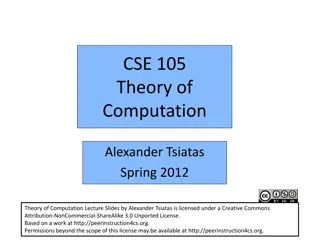Effective Strategies for Church Staff Reductions: Involuntary and Voluntary Options
Explore effective strategies for church staff reductions, including involuntary reductions in force and voluntary employee exit programs. Learn about salary freezes, attrition reductions, and reduced work schedules/furloughs to navigate challenging situations while ensuring compliance with employment laws.
Download Presentation

Please find below an Image/Link to download the presentation.
The content on the website is provided AS IS for your information and personal use only. It may not be sold, licensed, or shared on other websites without obtaining consent from the author.If you encounter any issues during the download, it is possible that the publisher has removed the file from their server.
You are allowed to download the files provided on this website for personal or commercial use, subject to the condition that they are used lawfully. All files are the property of their respective owners.
The content on the website is provided AS IS for your information and personal use only. It may not be sold, licensed, or shared on other websites without obtaining consent from the author.
E N D
Presentation Transcript
Options for Church Staff Reductions: Involuntary Reductions in Force and Voluntary Employee Exit Programs Victoria M. Garcia Partner Bracewell & Giuliani, LLP San Antonio, TX
Freezes Salary, hiring, promotion, post layoff hiring Pay Reductions Ensure applicable state wage payment laws are reviewed (advance notice may be required) Reduced salaries must meet minimum $455 threshold to retain exempt status Other limiting factors: employment agreements
Attrition Reductions Job reduction through attrition: Savings by not filling vacancies Vacancies can easily be filled when conditions improve Takes place over lengthy time period (but reduces immediate cost savings)
Reduced Work Schedules/Furloughs Placing employees on no-work, no- pay status due to budgetary constraints, lack of work or other non-disciplinary reasons May be voluntary or mandatory Temporary not impact on full time classification or benefits eligibility Permanent adjust classification and benefits
Reduced Work Schedules/Furloughs To realize cost savings, furloughs for salaried exempt employee must be for full FLSA work week: Must ensure that employee performs no work during that week No emails, phone calls, work at home, answering employee questions, etc.
Reduced Work Schedules/Furloughs FLSAlimitations on reducing exempt employee salaries Employer can require exempt employee to use vacation during Furlough If no vacation, salary must still be paid for partial week furlough May not reduce salary for furloughs of less than a full FLSAwork week
Three Types of RIFs Position elimination: position is completely eliminated Position consolidation: 2 or more positions are eliminated and their duties are combined into fewer positions Downsizing: the position continues, but with fewer employees performing the job duties
RIF Recommendation 1: Preparation Use objective selection criteria for RIF selection between employees Most objective: length/seniority of service Facilities are usually more interested in retaining best performers, regardless of seniority Determine if WARN or state mini-WARN applies to RIF
RIF Recommendation 2: Establish Criteria Document criteria used to choose between employees for downsizing RIF Rank employees separately for each facility, classification and work shift Appoint a diverse committee to oversee RIF, determine selection criteria application of RIF criteria, consistency and fairness After selections completed, conduct statistical disparate impact analysis
RIF Recommendation 3: Ensure Legal Compliance WARN: Facility Closing or Mass Layoff? Is notice required? 30-day and 90-day analysis If yes, provide timely and complete notice 60 days prior to facility closing or mass layoff Affected employee, state dislocated worker unit, and chief elected official State Law Mini-WARN Analysis
Older Worker Benefit Protection Act EEOC rules dictate employer notice to age- protected employees under OWBPA Employee waiver must be: In writing Not Misleading Plain language Specific reference to ADEA Provide decisional unit notice information No cure for defective OWPBAnotice
Special Requirements for Group RIFs A Group RIF is two or more employees, at least one of whom is age 40 or older Must inform employee in writing: Group covered and the eligibility factors Applicable time limits for execution of waiver agreement Job titles and ages of individuals eligible or selected and all individuals in same job not eligible or not selected Must give 45 days to consider waiver agreement and 7 days to revoke signature for a Group RIF
RIF Recommendation 4: Implementing the Reduction Articulate why positions are being eliminated Communicating with employees who are subject to the RIF Enhancing Post-RIF Morale Redefining the organization
Voluntary Exit Incentive Program Permitted by federal OWBPA Few state law issues Employer determines selection criteria to create pool of eligible employees Factors: department, job classification, full time or part time, age, length of service
Examples of Exit Program Groups Full-time Pastors who are at least 58 years old and have 10 years or more denominational service All employees at schools with 20 or more years of denominational service All employees who are at least 65 years old with 3 or more years of denominational service
Steps for Voluntary Exit Incentive Program Facility may select specific department or unit, job title and age/seniority group Use of age as eligibility factor does not violate law for voluntary exit program Provide notice of Program to eligible employees Give a minimum of 30 days to elect participation or reject
Steps for Voluntary Exit Incentive Program No rescission or withdrawal from Program after employee elects to participate Provide Separation Agreement with 45 days to consider and sign, 7 days to revoke If insufficient participation, next step may be involuntary RIF
Benefit Options Supplemental remuneration Early work release Vacation payout Continuation of medical coverage for 60 days and premium payments
Benefit Options Extension of eligibility for NAD retirement allowance (up to 3 years) NAD Working Policy Z Criteria: Enter into retirement Directly from employment with the organization conducting the Program Not applicable if person becomes employed with another denominational organization before entering into retirement
Benefit Options Extension of retiree moving allowance (up to 3 years) Criteria: Enter into retirement Directly from employment with the organization conducting the Program Has not received retiree moving allowance from another denominational employer Not applicable if person becomes employed with another denominational organization before entering into retirement
Benefits of Voluntary Exit Program Over Involuntary RIF Employees elect whether to cease employment Less damaging to employee morale Retain lower-paid and potentially higher motivated employees Fewer legal challenges
Disadvantages of Voluntary Exit Program To be successful, incentives must be offered beyond NAD policy Program may be more costly than RIF in short term Loss of experienced employees Takes more time to implement than RIF 30 days for election to participate 45 days to sign separation agreement, 7 days to revoke
Voluntary Exit Program Considerations Must be employee s free and voluntary choice to accept or reject Program Do not reserve the right to reject volunteering employees Minimum age requirements are typically permissible (even if > age 40) Maximum age requirements may violate the ADEA
Voluntary Exit Program Considerations Ensure category of employees selected for program is not so small to create impression that specific individuals are being targeted for removal Not an early retirement program Designate knowledgeable individual as Program Coordinator to answer employee questions Establish timeline for actions usually 90-100 days Ensure the Program is well-documented
Voluntary Exit Program Documents Introductory Letter to Eligible Employees Notice of Program and Terms Personalized statement of Program and benefits Employee Election Form Waiver and Release Agreement
Voluntary Exit Program Documents Frequently Asked Questions (FAQ s) Reminder letters to eligible employees Timeline of actions Involve attorney from the beginning of Program development
Elements of the Introductory Letter to Eligible Employees States that the organization needs to reduce employees, but that the choice is voluntary Explains eligibility criteria Use to deliver Program Notice, Personalized Statement, Election Form, Sample Waiver and Release, and FAQ Responses Identify with whom the employee may discuss the program States the Election Deadline
Elements of the Program Notice Explains eligibility criteria Explains election process and deadlines Explains exit incentive benefits Explains separation agreement and timing to sign agreement Reiterates that the program is voluntary Contains at-will employment statement Provides contact information for questions
Elements of Personalized Statement Specific to each individual recipient Explains how the employee meets the eligibility criteria Lists the benefits that the individual will receive if he or she chooses to participate Explains the program election process, deadlines and requirements
Elements of the Release and Waiver Agreement Important dates Last date of employment Date agreement provided to employee Consideration period Revocation period
Elements of the Release and Waiver Agreement Benefits provided to the employee (examples) Salary through end of employment Supplemental compensation Paid days off Reimbursement of medical plan premiums Legal claims the employee is releasing
Elements of the Release and Waiver Agreement End of employment issues Confidential information Return of facility property OWBPA decisional information required by OWBPA List of job titles and ages of individuals eligible for the Program List of job titles and ages of individuals with the same job classification who are not eligible for the Program
